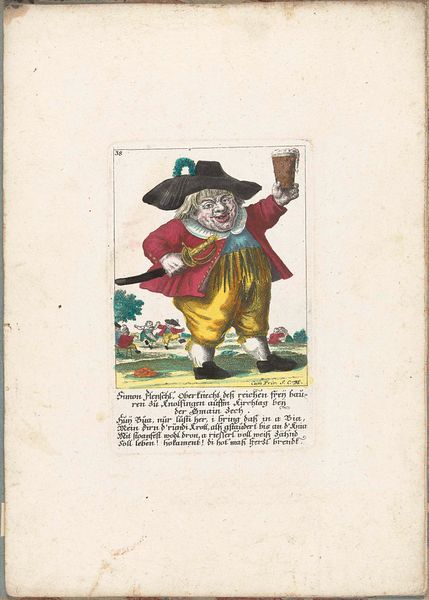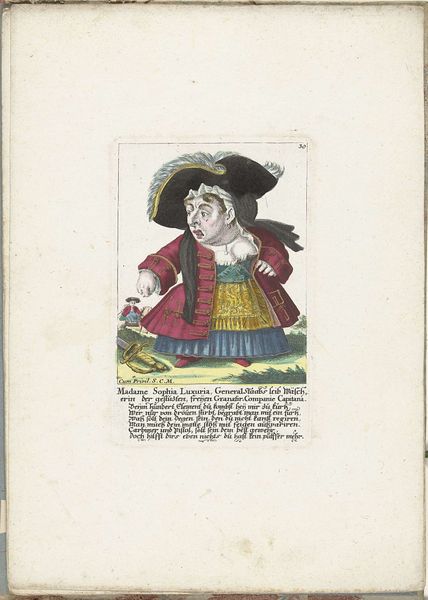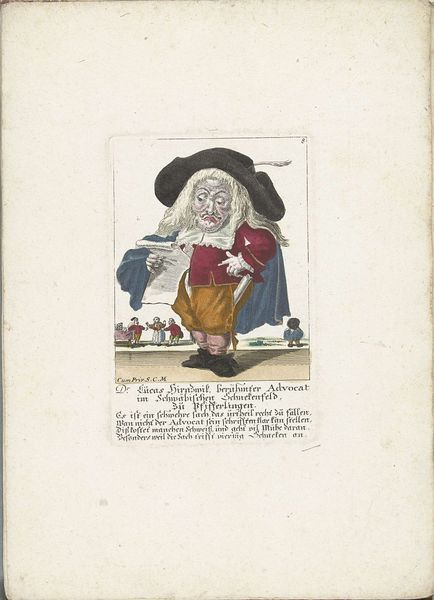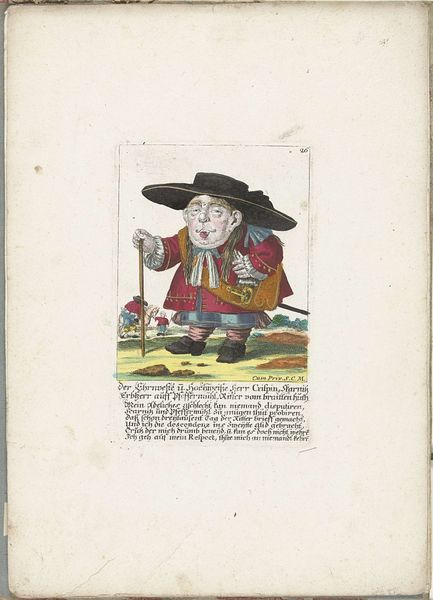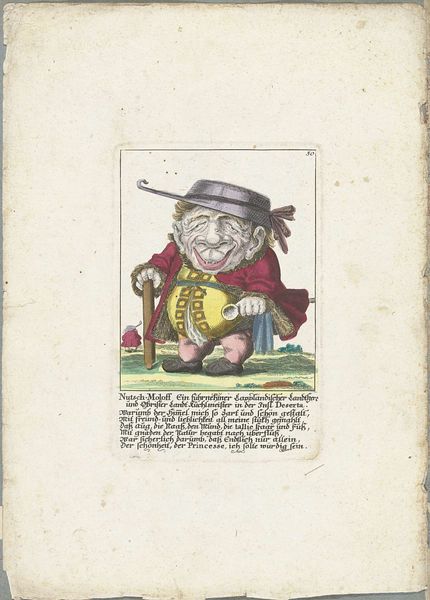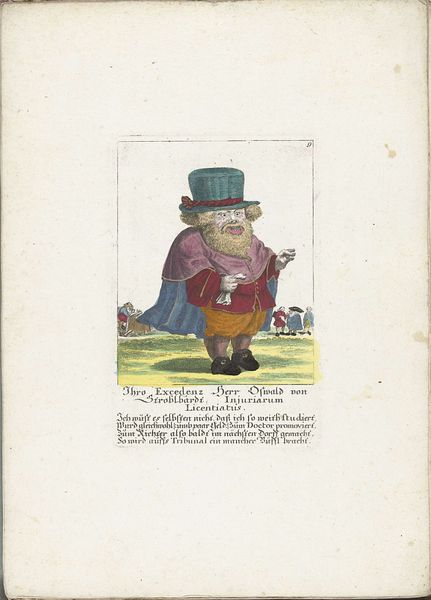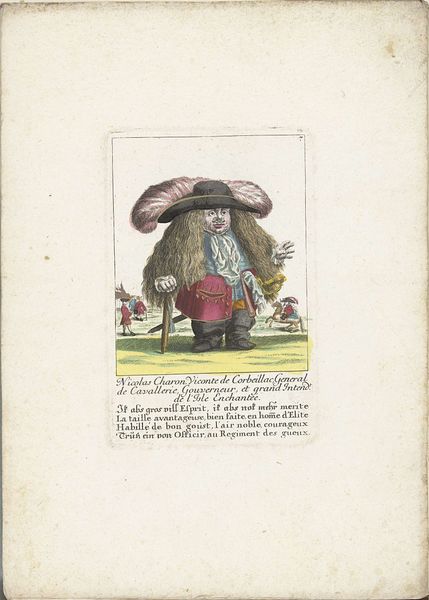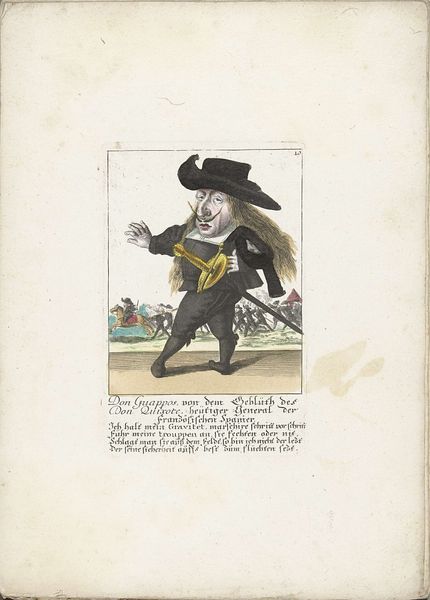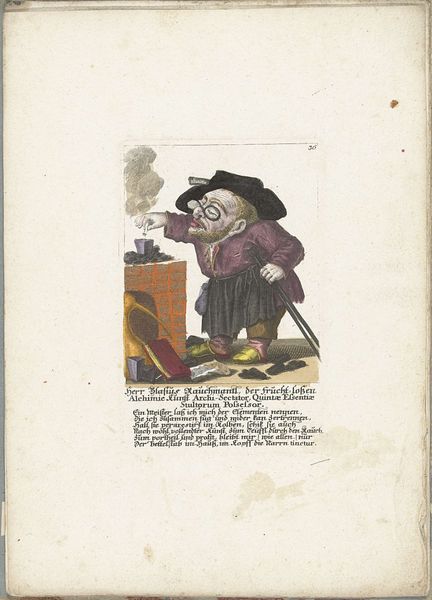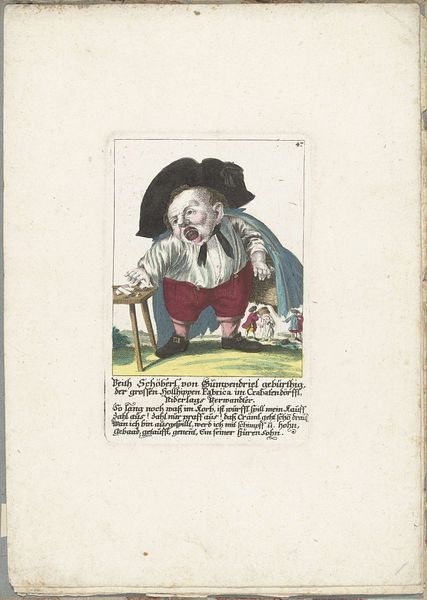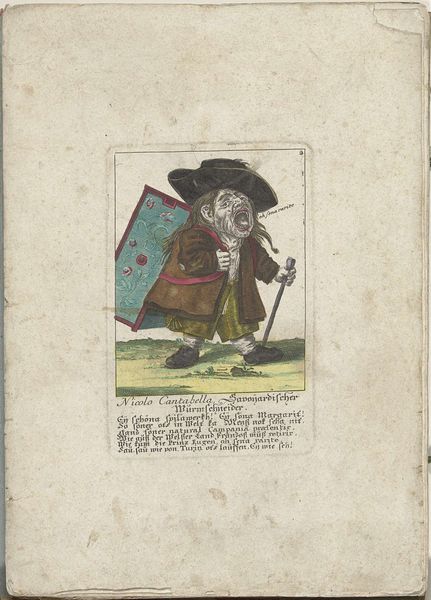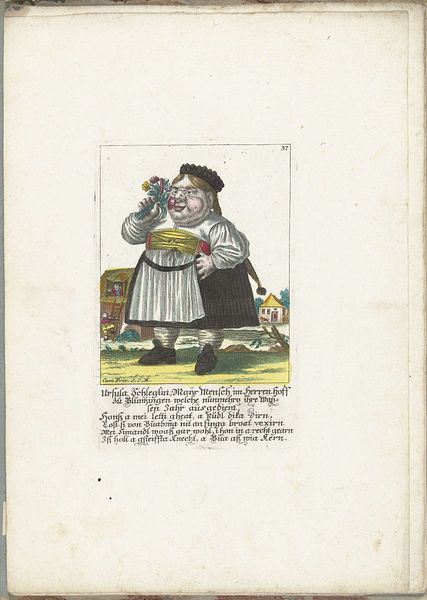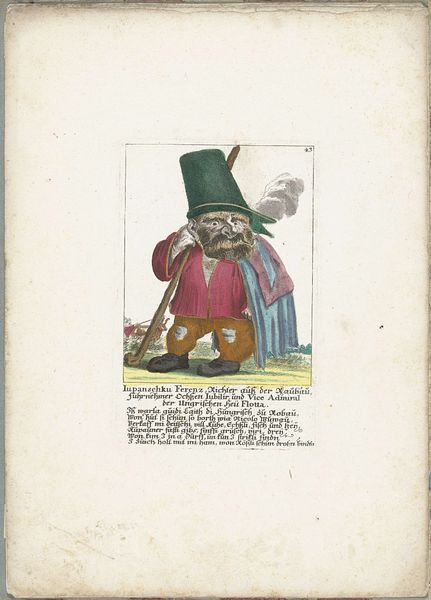
De dwerg Gilles Platfues als Franse dansmeester, ca. 1710 1705 - 1715
0:00
0:00
print, engraving
#
portrait
#
baroque
# print
#
caricature
#
coloured pencil
#
genre-painting
#
history-painting
#
cartoon carciture
#
engraving
Dimensions: height 170 mm, width 110 mm, height 320 mm, width 225 mm
Copyright: Rijks Museum: Open Domain
Curator: Oh, my! What a delightful caricature. It exudes such playful energy, despite its antiquated charm. Editor: Indeed! Let me introduce what we're seeing here. This print, crafted by Martin Engelbrecht around 1710, is titled "De dwerg Gilles Platfues als Franse dansmeester," or "The dwarf Gilles Platfues as a French Dancing Master." Curator: "Dwarf" feels rather loaded; can we assume this was poking fun at marginalized figures through caricature for popular consumption? The inscription appears to be a satire, some kind of verse? Editor: Precisely! Prints like this circulated widely, shaping and reinforcing social hierarchies through humor. It certainly plays into existing societal prejudices, positioning the subject, who is a dancing instructor, as somehow inherently ridiculous through his exaggerated features and stature. Curator: And he’s a FRENCH dancing master. As if being a dwarf isn’t bad enough, he's from FRANCE! In a small room in this Rijksmuseum we’re finding all these elements coalescing into a really biting cultural statement. Tell me, what does the inscription say? Editor: (Laughing slightly.) Well, translated it’s like nonsense verse, making commentary about cadence. It sounds to me as though it is mocking instruction for the minuet. And in fact, caricatures and genre paintings were used in concert to ridicule types and even whole professions! Curator: Fascinating. Even in its own time this was recognized for being a cartoon! But I do also note that there are elements that feel classical or that indicate wealth; observe the gold buttons, cravat, and heels of his dress! Editor: Absolutely. Visually, the attention to detail in his elaborate costume, juxtaposed with his somewhat grotesque features, amplifies the humor. Engelbrecht draws our attention to a tension between social aspiration and physical limitations. It creates an interesting dynamic. Curator: It speaks to how visual media helped create societal types to either demonize, promote or just examine various facets of human behavior; art shapes thought and opinions, especially for the masses! Well, I will continue to think about his composition in relation to political satire, while trying to restrain my modern sensibilities in looking at this etching. Editor: Yes, its historical importance can’t be ignored, and hopefully the audio helps others gain better insights into it.
Comments
No comments
Be the first to comment and join the conversation on the ultimate creative platform.
